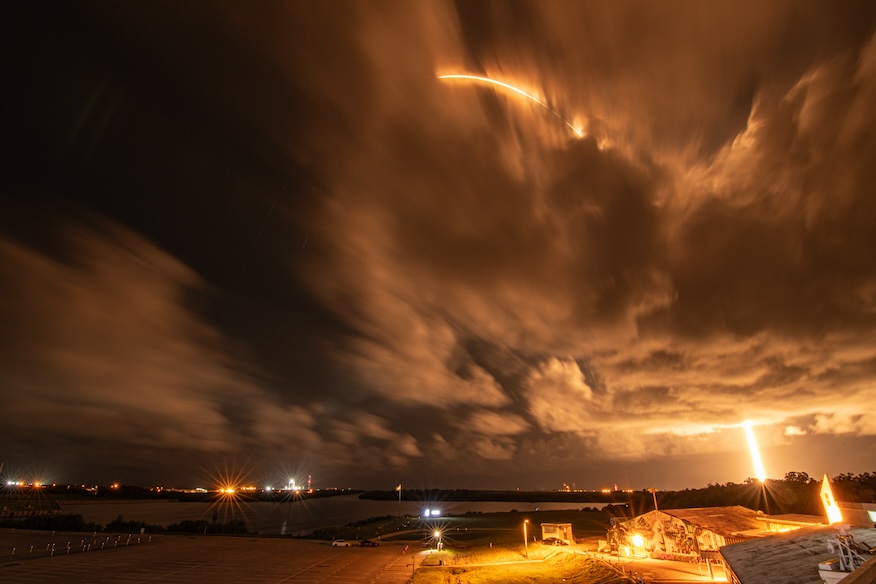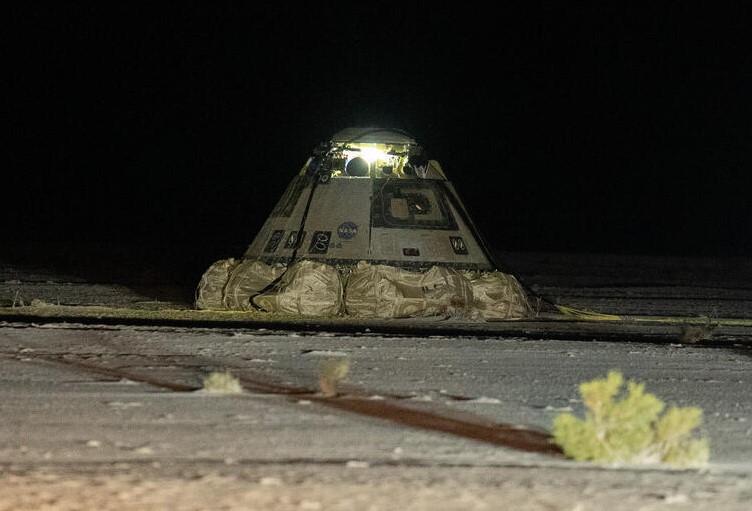
Update 4:04 a.m. EDT: SpaceX launched the mission and landed its first stage booster on its droneship, ‘Just Read the Instructions.’
After shuffling the launch schedule a bit, SpaceX kicked off back-to-back launches from both coasts in the span of a little more than an hour. The company first launched the Starlink 8-10 mission from Cape Canaveral Space Force Station, before it launched another flight of Starlink satellites from Vandenberg Space Force Base.
The launch will add another 21 Starlink satellites to SpaceX’s growing megaconstellation in low Earth orbit. Liftoff from Space Launch Complex 40 (SLC-40) happened at 3:43 a.m. EDT (0743 UTC), the end of the Saturday launch window.
The Falcon 9 first stage booster supporting this mission, tail number B1069 in the SpaceX fleet, launched for an 18th time. It previously launched SpaceX’s 24th Cargo Resupply Services (CRS-24) mission to the International Space Station, Eutelsat’s HOTBIRD-F1 satellite and 13 previous Starlink missions.
About 8.5 minutes after liftoff, B1069 landed on the SpaceX droneship, ‘Just Read the Instructions.’ This was the 90th landing for JRTI and SpaceX’s 342nd droneship landing to date.
Shifting around in launch times early Saturday morning moved this launch into the position of being SpaceX’s return to flight mission. This follows a short period during when the Falcon fleet was grounded by the Federal Aviation Administration (FAA) due to a failed booster landing attempt on Wednesday morning.
Back to flight (again)
While SpaceX was temporarily grounded from launching its Falcon 9 rockets, this go around was dramatically shorter than the paused caused by an upper stage anomaly in July, which lasted about two weeks. SpaceX was grounded for just a couple of days after one of its boosters, B1062, failed to land safely amid the Starlink 8-6 flight on Wednesday.
The landing failure was the first misfire in this way since the Starlink L19 mission in February 2021.
“The SpaceX Falcon 9 vehicle may return to flight operations while the overall investigation of the anomaly during the Starlink Group 8-6 mission remains open, provided all other license requirements are met,” the FAA said in a statement on Friday. “SpaceX made the return to flight request on Aug. 29 and the FAA gave approval on Aug. 30.”
SpaceX wasted no time in getting back to the launchpad. In the hours following the FAA’s statement, the company announced plans to launch the Starlink 9-5 and 8-10 missions from VSFB and Cape Canaveral Space Force Stanton respectfully.
The former of those two was originally billed as the second act of back-to-back scheduled launches on Wednesday. However, after the booster landing anomaly, SpaceX decided to hold off on launching the Starlink 9-5 flight.
SpaceX is also trying to determine when next it can attempt the launch of its next Crew Dragon mission: Polaris Dawn. On Thursday, SpaceX said it was still working to identify a launch date that would have a favorable weather setup for a splashdown off the coast of Florida about five days after launch.

